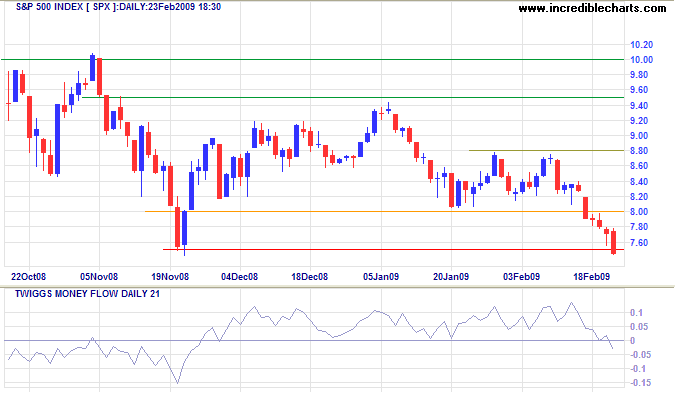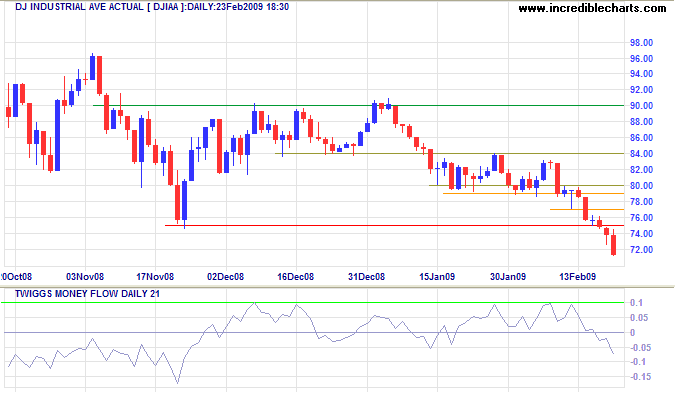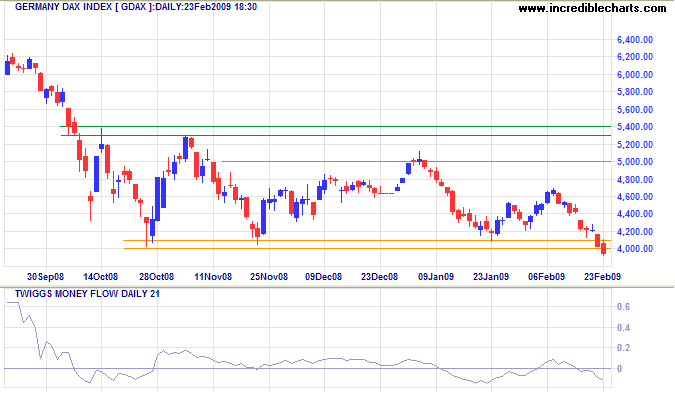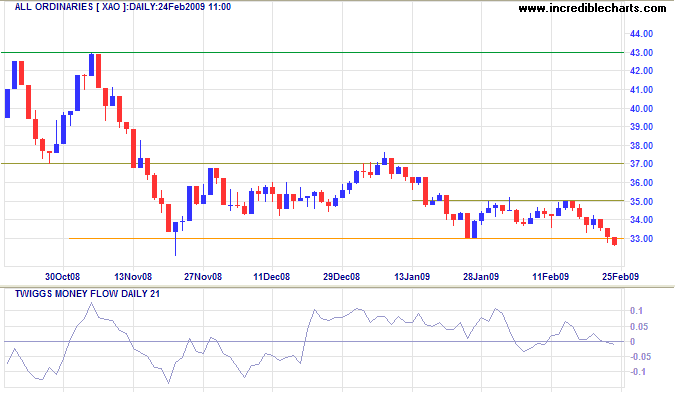S&P 500 Confirms Primary Down-Swing
By Colin Twiggs
February 23, 8:00 p.m. ET (12:00 midday AET)
These extracts from my trading diary are for educational purposes and should not be interpreted as investment or trading advice. Full terms and conditions can be found at Terms of Use.
USA
S&P 500
The S&P 500 broke through primary support at its November low of 750, confirming last week's Dow breakout. This signals a primary down-swing with a target of 600; calculated as 750 - ( 900 - 750 ). Twiggs Money Flow crossed below zero to warn of selling pressure.

Dow Jones Industrial Average
The Dow closed below support at 7500 on Friday, but we had to wait two days for confirmation from the broader S&P 500. The breakout signals a primary down-swing with a target of 6000; calculated as 7500 - ( 9000 - 7500 ). Followers of Dow Theory used the Railway Average, later expanded to the Transport Average, and the Industrial Average to confirm each other. In Dow's time railway stocks used to dominate the stock exchange, but the Transport sector now plays a secondary role. While transport stocks such as Fedex and UPS are still useful as an early warning system, I prefer to use the broader S&P 500 index to confirm Dow signals.

German DAX
The DAX likewise broke through primary support at 4000, warning of another down-swing with a target of 3000; calculated as 4000 - ( 5000 - 4000 ).

Australia
The All Ordinaries and ASX 200 have broken through primary support at 3300 and 3350 respectively, in sympathy with the Dow. This signals the start of another primary down-swing, with a target of the March 2003 low of 2700.

We have seen that a "line" in the average — a succession of closing prices over sufficient number of days for a fair volume of trading within a narrow range
— must indicate either accumulation or distribution;
and that a movement of price out of that line,
downward or upward, will confidently indicate a change in the general market direction of at least a secondary and even a primary character,
which we can depend on where either average is confirmed by the other.
~ William Peter Hamilton: The Stock Market Barometer (1922)

Author: Colin Twiggs is a former investment banker with almost 40 years of experience in financial markets. He co-founded Incredible Charts and writes the popular Trading Diary and Patient Investor newsletters.
Using a top-down approach, Colin identifies key macro trends in the global economy before evaluating selected opportunities using a combination of fundamental and technical analysis.
Focusing on interest rates and financial market liquidity as primary drivers of the economic cycle, he warned of the 2008/2009 and 2020 bear markets well ahead of actual events.
He founded PVT Capital (AFSL No. 546090) in May 2023, which offers investment strategy and advice to wholesale clients.
